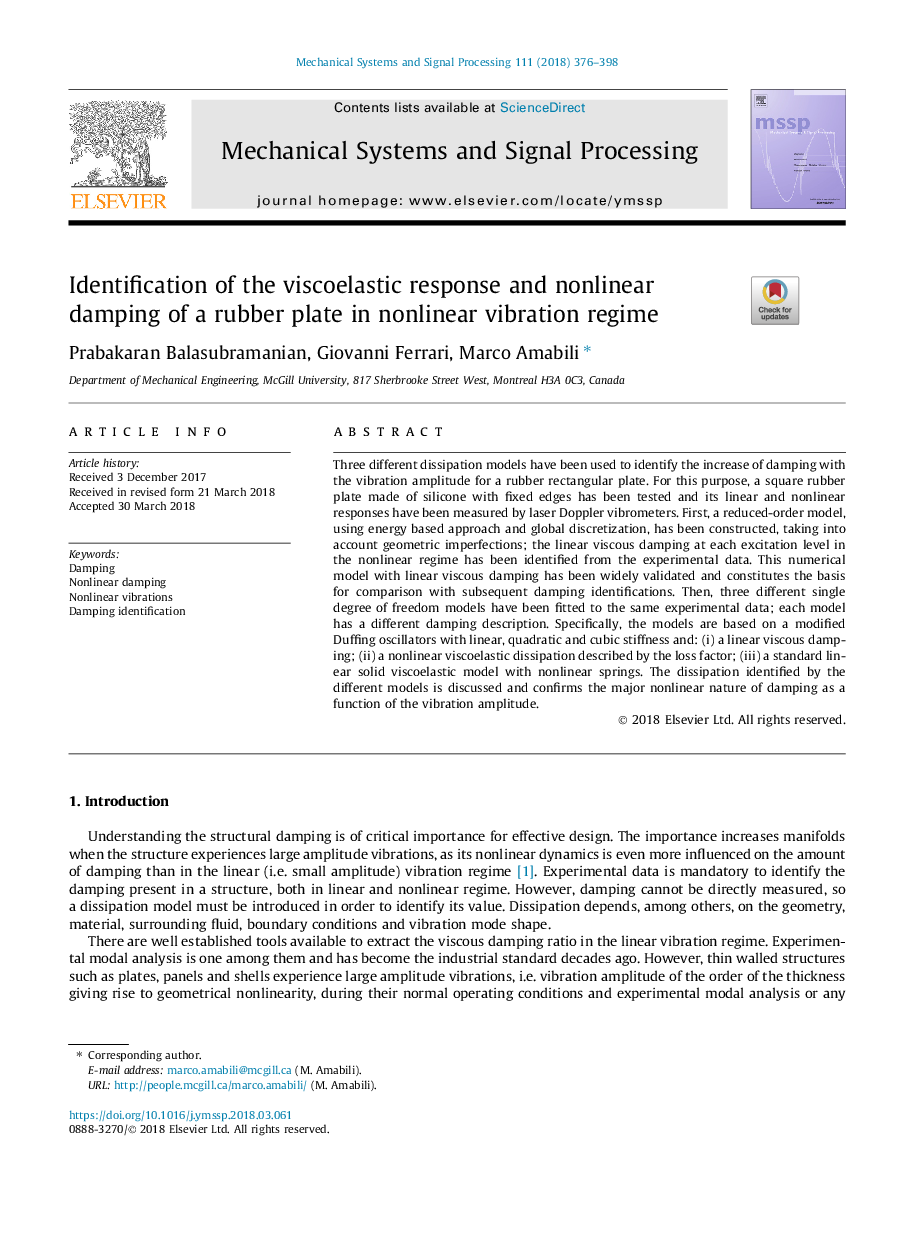| Article ID | Journal | Published Year | Pages | File Type |
|---|---|---|---|---|
| 6953897 | Mechanical Systems and Signal Processing | 2018 | 23 Pages |
Abstract
Three different dissipation models have been used to identify the increase of damping with the vibration amplitude for a rubber rectangular plate. For this purpose, a square rubber plate made of silicone with fixed edges has been tested and its linear and nonlinear responses have been measured by laser Doppler vibrometers. First, a reduced-order model, using energy based approach and global discretization, has been constructed, taking into account geometric imperfections; the linear viscous damping at each excitation level in the nonlinear regime has been identified from the experimental data. This numerical model with linear viscous damping has been widely validated and constitutes the basis for comparison with subsequent damping identifications. Then, three different single degree of freedom models have been fitted to the same experimental data; each model has a different damping description. Specifically, the models are based on a modified Duffing oscillators with linear, quadratic and cubic stiffness and: (i) a linear viscous damping; (ii) a nonlinear viscoelastic dissipation described by the loss factor; (iii) a standard linear solid viscoelastic model with nonlinear springs. The dissipation identified by the different models is discussed and confirms the major nonlinear nature of damping as a function of the vibration amplitude.
Related Topics
Physical Sciences and Engineering
Computer Science
Signal Processing
Authors
Prabakaran Balasubramanian, Giovanni Ferrari, Marco Amabili,
